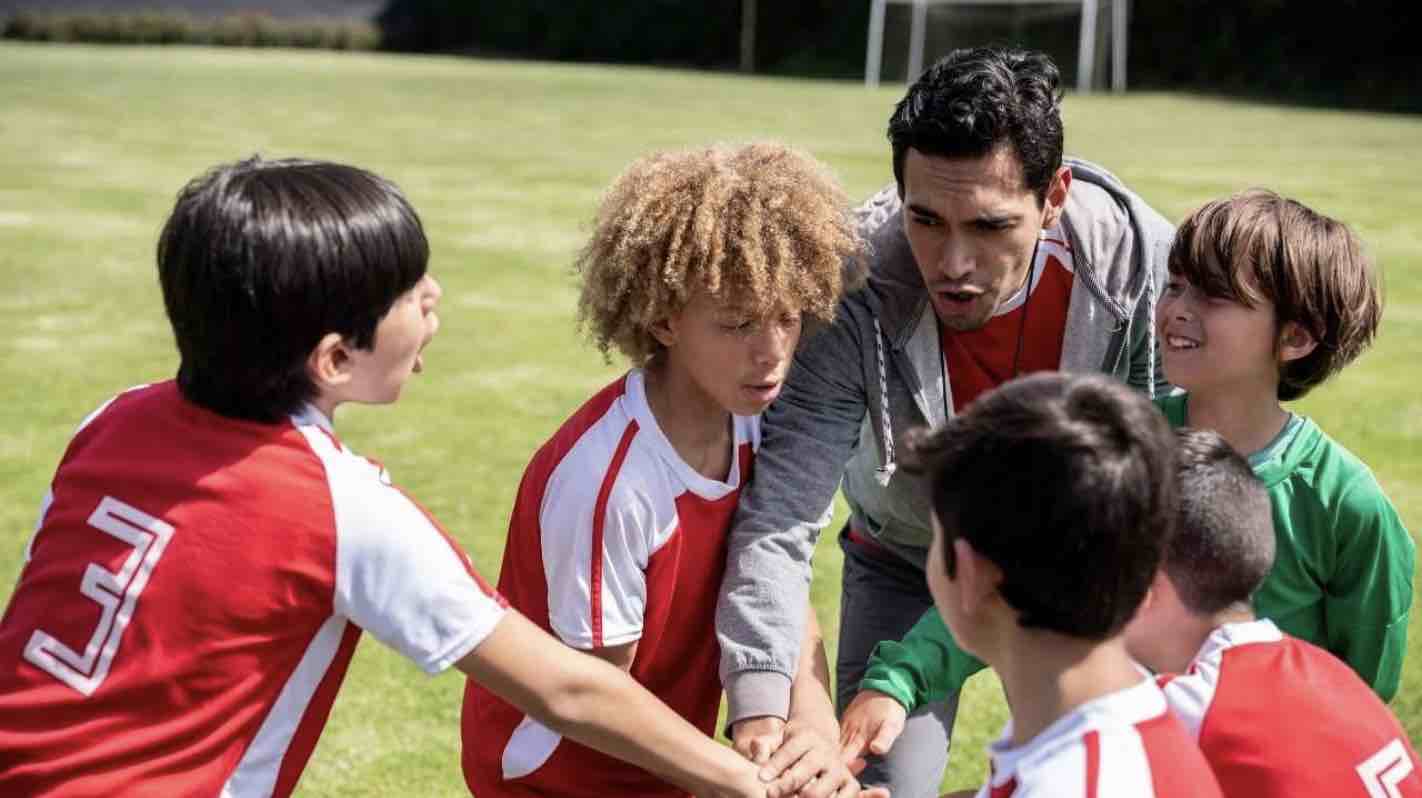The ability to empathize with a player might be the most important skill you can have as a coach.
By Laura Lambert

Behavior tells a story. Anyone who’s worked with kids long enough — in particular, vulnerable kids — knows what this means. A child with a quick temper on the field is not a troublemaker. One who shuts down in the middle of practice isn’t necessarily checked out — or ignoring you. Most likely, their behavior is tied to a set of experiences — of stresses, traumas and triggers — that you, as a coach, may know nothing about.
But it’s your job to try to understand it, nonetheless.
“When someone commits a foul, there are going to be kids who get aggressive really quick,” says Laura Marquez, a long-time volunteer coach with Coaching Corps, a national nonprofit that trains coaches to work with kids in under-resourced communities. Marquez has learned to shift her focus from, say, the aggressive behavior itself to what might be going on underneath it all. “If they’re getting aggressive, it’s What’s going on at home? At school? Personally?” she says.
Marquez has gained such perspective as she’s progressed through several of Coaching Corps’ trainings — including one of the latest, on coaching with empathy.
“I love how you’re able to apply it,” says Marquez. And it’s not just helping kids manage the biggest, loudest emotions. As a soccer coach in East Los Angeles, Marquez recalls a shy child who was having a hard time finding his place on a team with three superstars, friends who had played soccer their entire lives. She helped her players tune in to the situation, so they could partner up and make him part of the team. “It’s the little situations where you can say, I see you. I am going to bring you in,” she says.
Social and emotional learning (SEL) is a cornerstone of Coaching Corps’ approach to coach training. Of the four key SEL skills they emphasize — persistence, optimism, self-regulation and empathy (a.k.a. POSE) — empathy initially proved to be a struggle for many coaches. The existing SEL training wasn’t enough, says Suzanne Sillett, the director of education and quality for Coaching Corps. “They needed more skills and strategies to implement it”
There’s a small irony here. The easiest way to teach empathy is to model it, explains Sillett. But being intentional about empathy is harder than you might think. For some people, it’s a natural skill — it’s how they relate. But for many others, empathy is a skill that needs to be developed.
“Empathy is borne out of the idea that kids show up with their own individual unique experiences that you likely don’t know about,” explains Sillett. Those experiences can be intense and profound — the collective trauma of racism and discrimination, or the individual trauma of violence or neglect. Sillett emphasizes that the role of the coach is not to solve those problems — which are not necessarily solvable. It’s to use empathy as a tool to create a safe environment, so that a group of 10 or 12 kids know that every Thursday from 5 to 6 p.m., for example, you listen to understand their experience without your own experience or judgment clouding it.
The Coaching Corps approach to teaching empathy is built around another handy acronym: PACT.
P is for perspective. Try to see the world through that other person’s eyes.
A is for align. Believe the other person’s experience to be their truth.
C is for connect. Confirm what they’re feeling and show them you care.
T is for think. Take time to think about and reflect on your interaction, to see if you can improve next time.
The actual training breaks the concepts down into even more concrete steps and actions — encouraging a coach to stop and take a breath, first, as they try to align what’s going on with a child.
What’s more, a coach can bring the concepts behind PACT to the team itself — to help the players themselves grow their own empathy as they interact with each other over the course of a season. Or at school. Or at home.
It’s no accident that Coaching Corps’ empathy training launched in January 2021.
“We built the training for empathy before COVID, before George Floyd,” explains Sillett. “It was important before but I think it has a new resonance now.”
After a year where the pandemic hit communities unevenly, with disease, death and financial instability striking some families all at once, many children and families are still contending with unprecedented hardship and trauma.
And yet one of the most powerful tools we have to combat trauma is the same: empathy. Says Sillett, “If you just show up every day, if you listen to the young people, if you try to understand their experience, show care for them and reflect on your own actions, you are helping kids heal.”
What Coaches Need to Know About Social and Emotional Learning